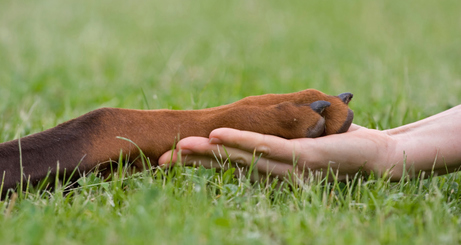|
I had a conversation with a shelter director recently during which she touched on the level of division between “factions” of the animal welfare movement. I spoke of my frustration in gaining cooperation from officials in my region in spite of exhaustive attempts to provide encouragement and help. She spoke of having been verbally assaulted in the grocery store by people who accused her of wanting to destroy animals. We both agreed that if people who are passionate about the subject of animal welfare would simply check their egos and personal agendas at the door, conversations about how to save the lives of shelter animals would be much more civil and much less toxic.
When I think of the division between people about animals, it brings to mind an image of a deep chasm or gorge. On one side of the chasm is the animal loving American public. We love our companion animals at best and value them at least. We know they are not children, but they are family members and are involved with almost every facet of our daily lives. We care for them, take them on trips, give them toys and treats and when we lose them to time or illness, the loss can be devastating. Most of the people on “this side” of the chasm either know little about how animal shelters operate or they just don't think about it. We all think about what affects us personally and what shows up on the radar of daily life for each of us. Most people on this side presume that the shelters operated using our tax dollars and donations do the best they can to save animals and that animals are only destroyed for reasons of mercy. We like to think we are progressive, informed and we make good choices because we love our pets. On the other side of the chasm are those who work in the animal sheltering industry. Some work for municipal shelters and others work at nonprofit shelters. For those on the “other side” who work at shelters which routinely destroy healthy and treatable pets, life can be grim. Even if they love animals and want to help, they feel overwhelmed, underpaid, misunderstood and most of them are angry. At the public. They see the people they serve or engage with as the source of the problems, often referring to the irresponsible public which makes mistake after mistake and which treat pets as if they are disposable. They feel they are forced to do acts behind closed doors which no one could possibly want to do and yet they feel they have no choice. They think they are doing the best they can. The only way we will ever become a no kill nation – above and beyond the list of no kill communities which grows with each passing day – is for us to bridge the chasm. The subject of animal sheltering must be put on the radar of the public so they understand what is taking place using their money and so they can be educated to make better choices like spaying and neutering pets, ensuring pets can be identified if lost, not allowing dogs to run at large, making plans for pets in the event of some crisis or family emergency. And yes, taking a good look at whether or not we are prepared to live up to the long-term commitment which comes with being a pet caregiver and which cannot simply be abandoned when things don't go quite as we planned. And those in the animal sheltering industry must, once and for all, take ownership and responsibility for what happens in shelters and stop presuming that every animal ends up in the shelter due to someone's irresponsibility or complacency. They must stop assuming that the public knows the challenges and issues faced by the shelter just because they know as if it is obvious to all outside the shelter walls. It is not. And it makes no sense at all to say, “this is your fault. You are to blame for the death. But won't you please volunteer and donate and foster and adopt?” Yes, there are people who should never have pets but shelters simply must presume the best of the public they support, be firm with the public in order to stop the cycle of pet surrender and help the public understand exactly what help is needed to save the lives of healthy and treatable pets. Check your ego at the door. Grab some rope. It's time to bridge the chasm. For the sake of the animals we say we love and value in our society.
0 Comments
Your comment will be posted after it is approved.
Leave a Reply. |
AuthorI am an animal welfare advocate. My goal is to help people understand some basic issues related to companion animals in America. Awareness leads to education leads to action leads to change. Archives
July 2024
Categories
All
image courtesy of Terrah Johnson
|

 RSS Feed
RSS Feed